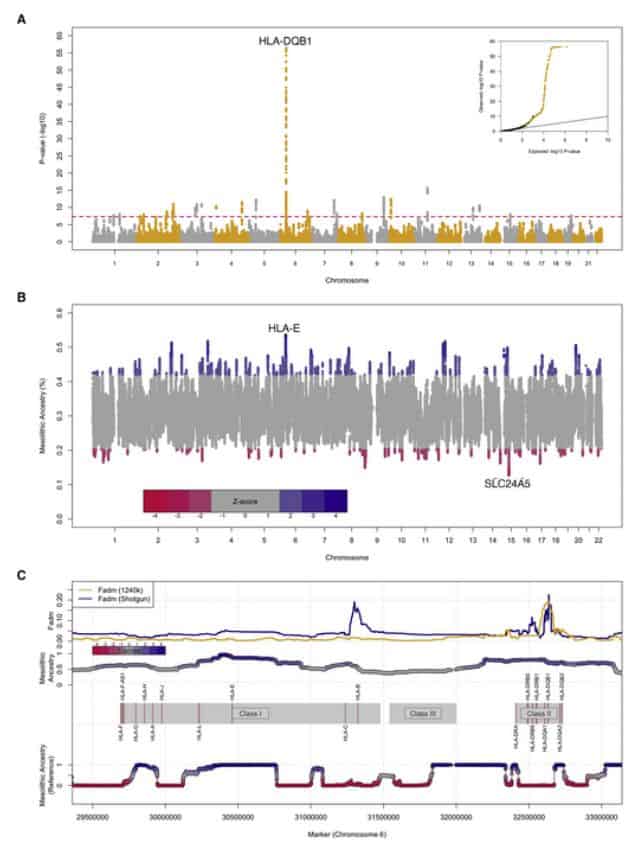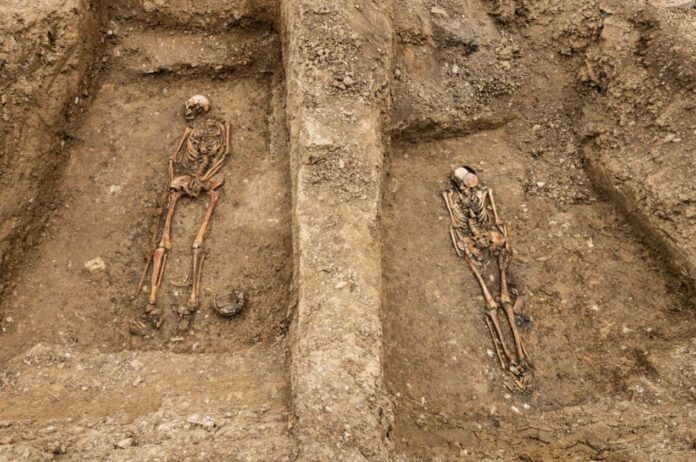Early European Farmers and Hunter-Gatherers Shared Genes to Fight Disease
To survive disease, early European farmers incorporated genes from hunter-gatherers, whom they encountered and intermixed with upon migrating from the Near East around 8,000 years ago.
Analysis of numerous ancient genomes from this era indicates that the mixed population possessed more hunter-gatherer ancestry in adaptive-immunity genes than would be randomly anticipated.
These results, published in Current Biology today, indicate that the interbreeding produced combinations of genetic diversity that were subject to natural selection, a fundamental mechanism by which all living organisms, including humans, evolve and transform over time.
Changes in immunity genes occurred in the major histocompatibility complex (MHC) region, a collection of genes that assist human immune systems detect pathogens by coding for cell surface proteins. The researchers also found more farmer ancestry in a gene called SLC24A5, which affects the color of skin.

“This tells us that these regions of the genome were experiencing natural selection,” remarks Tom Davy of the Francis Crick Institute’s Ancient Genomics Laboratory in London. “The genetic variants predominantly carried by hunter-gatherers in the MHC region and by farmers in SLC25A5 increased in frequency in the descendant population.”
In recent times, the examination of ancient genomes has enabled researchers to effectively journey back in time and track the evolution of humans and other species. While previous studies involving ancient DNA have primarily focused on archaeological inquiries, Davy and Pontus Skoglund from the Francis Crick Institute, along with Iain Mathieson and colleagues from the University of Pennsylvania, recognized that the increasing availability of standardized and shared ancient genome data has opened up new possibilities for exploring natural selection and human adaptation during prehistoric eras.
They conducted a genome-wide analysis of DNA extracted from 677 individuals across Mesolithic and Neolithic Europe. Their aim was to detect any ancestry deviations within the genomes of admixed individuals and to determine whether such deviations appeared to be the outcome of natural selection, rather than random alterations.
According to their analysis, the Neolithic local ancestry showed a higher frequency of a gene associated with pigmentation, while the mixed group retained more genes from the MHC immunity locus of the hunter-gatherers. The researchers suggest that this could be due to the advantage of having a greater diversity in immune response. Alternatively, the MHC alleles from the hunter-gatherers may have been positively selected for because they facilitated greater survival and adaptation to pathogens in the Neolithic group.
Although there may have been other contributing factors, the results suggest that immune function was a key target of natural selection in late-Stone-Age populations. The researchers were surprised to find that the hunter-gatherers had a higher representation of immune genes.
Skoglund explains that there has been a long-standing theory that immune adaptation was driven by farming lifestyles due to factors such as denser settlements, new diets, and proximity to livestock. The expectation was that the immunity genes of farmers would be better adapted to the farming lifestyle and therefore more positively selected for when they mixed with local hunter-gatherer groups as they expanded from the Near East into Europe. However, the opposite was observed, with hunter-gatherer ancestry being more prevalent at the MHC immunity locus. Skoglund suggests that this could be due to the hunter-gatherers already being adapted to the pathogens found in Europe or because natural selection favored diversity in immunity genes.
Previous studies have also demonstrated changes in pigmentation, but the reasons for these changes are not entirely clear.
“One hypothesis is that lighter skin pigmentation allowed farmers to synthesize more vitamin D from ultraviolet radiation, while hunter-gatherers were able to obtain sufficient vitamin D from their diet,” Mathieson adds.
The new study builds upon recent findings of adaptive admixture at the MHC region and, for the first time, sheds light on selection in a Stone Age human population. The researchers note that the discovery of increased diversity at the MHC locus provides new insights into the adaptations that occurred with the global shift towards agricultural lifestyles, which they describe as a significant transition in human history. Overall, these findings have opened up new avenues for understanding the complex interplay between genetic adaptation and the emergence of agriculture.
The findings “revealed natural selection during the agricultural transition in one region of the world, Europe, but other regions are not well understood,” adds Skoglund. “Future ancient-DNA studies will also be able to address to what extent immunity was a key target also in other periods of environmental and lifestyle change during human evolution.”
Source: 10.1016/j.cub.2023.02.049
Image Credit: Silas Stein/picture alliance via Getty Images
